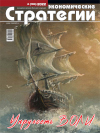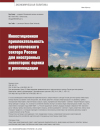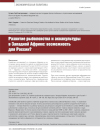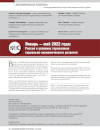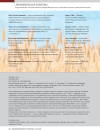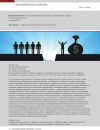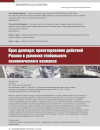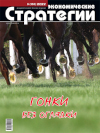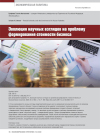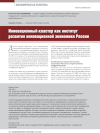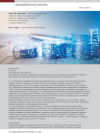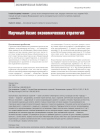Investment Attractiveness of the Russian Energy Sector for Foreign Investors: Assessment and Recommendations
DOI: https://doi.org/10.33917/es-4.184.2022.106-112
The article analyses the investment attractiveness of the Russian energy sector for foreign investors. Analysis is based on such indicators as the volume of energy resources’ production and export as well as their dynamics, foreign direct investment in the country’s energy industry, portfolio investment in the “green” energy industry. The author draws up a conclusion that despite the exports decrease in the main types of energy resources (oil, gas, coal, energy) over the past few years (2020–2021), Russia continues to play a leading role in the global fuel and energy complex, the volume of foreign direct investment in industry is steadily growing, the “green” energy industry is actively developing. The author also dwells on the difficulties that foreign investors have to face when investing in the Russian energy sector. The present study results in identifying the main directions for improving investment attractiveness of the Russian energy sector for potential foreign investors.
Источники:
1. Lizikova M. Nuclear energy prospects and legal challenges towards achieving sustainable development goals. E3S Web of Conferences, 2020, no 1, p. 02009.
2. Baisaeva M.U. Rol’ i znachenie inostrannykh investitsii v Rossii [Role and Importance of Foreign Investments in Russia]. Ekonomist”, 2020, no 1, pp. 80–82.
3. Vypkhanova G.V., Zhavoronkova N.G. Innovatsii v energetike — organizatsionno-pravovye aspekty [Innovations in the Energy Sector — Organizational and Legal Aspects]. Aktual’nye problemy rossiiskogo prava, 2021, vol. 16, no 1 (122), pp. 189–203.
4. Tsentral’nyi bank Rossiiskoi Federatsii [Central Bank of the Russian Federation], available at: https://www.cbr.ru/
5. Obzor energetiki stran BRIKS [Overview of the BRICS Countries Energy]. Sammit BRICS, 2020, November, 17, available at: https://brics-russia2020.ru/images/114/89/1148936.pdf.
6. Balafas V., Fakiolas E.T. From energy security to energy dominance: US’ blending of politics and economics. Strategic Analysis, 2020, no 44 (2), pp. 91–105.
7. Inevatova O.A., Matushkin E.F. Problemy i perspektivy ispol’zovaniya kapital’nykh vlozhenii v energetike [Problems and Prospects of Using Capital Investments in the Energy Industry]. Tendentsii razvitiya nauki i obrazovaniya, 2021, no 69-2, pp. 21–24.
8. Nagimova A. Arabskie investitsii v rossiiskuyu infrastrukturu [Arab Investments in Russian Infrastructure]. Mirovaya ekonomika i mezhdunarodnye otnosheniya, 2020, vol. 64, no 3, pp. 80–87.
9. Eksport Rossiiskoi Federatsiei prirodnogo gaza (po dannym FTS i Rosstat) [Export of Natural Gas by the Russian Federation (According to the Federal Customs Service and Rosstat)]. Tsentral’nyi bank RF, available at: https://cbr.ru/vfs/statistics/credit_statistics/trade/gas.xls.
10. Ministerstvo energetiki Rossiiskoi Federatsii [Ministry of Energy of the Russian Federation], available at: https://minenergo.gov.ru/
11. Pryamye investitsii po sektoram ekonomiki [Direct Investments by Sectors of the Economy]. Tsentral’nyi bank RF, available at: https://cbr.ru/statistics/macro_itm/svs/


